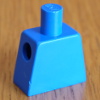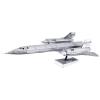Search the Community
Showing results for tags 'gbc'.
Found 191 results
-

EV3 GBC starter module?
Huaojozu posted a topic in LEGO Technic, Mindstorms, Model Team and Scale Modeling
I have recently become interested in the art and science of GBC and I am looking for the best way to start building. One problem though, I don't like to mix my sets . I have seen some great GBC c-models (such as https://www.youtube.com/watch?v=lb5kTm9Ykn0 ) but unfortunately haven't been able to find any instructions. In particular I am looking for simple GBC modules made of single sets to study the entire GBC mechanic and learn from it to make my own modules. It doesn't really need to be fancy or cool, just functional and c-model-ish. Has anyone come across something similar? It seems that in all topics I've found, the possibility of making modules as c-models of existing technics sets isn't really discussed.- 10 replies
-
- ev3
- mindstorms
-
(and 2 more)
Tagged with:
-

[GBC] Akiyuki project (EV3)(NXT)
9v system posted a topic in LEGO Technic, Mindstorms, Model Team and Scale Modeling
welcome to the mindstorm section of the Akiyuki project, this topic is for the modules of Akiyuki that have mindstorms in them or use mindstorms in any way. as always I would appreciate any information (pictures/videos) of these modules working or built here's what I know so far: Ball Cleaner EV3( in progress by @Juroen) program by Akiyuki (stud.io file available instructions coming soon) Container Transporter NXT instructions available here by @Courbet program by @9v system available here Fast Ball Sorter EV3 instructions by Courbet, built by Courbet and Mogwai, program also by Courbet and Mogwai, Render by Blakbird(instructions available) building instructions, program for the ev3 any help would be good to get these modules made into instructions (programs will also need to be made) 9v system -

[TC10] Pneumatic lift [GBC] module
Captainowie posted a topic in LEGO Technic, Mindstorms, Model Team and Scale Modeling
Hi. With the quality of entries I've seen so far, I don't like my chances of winning, but it would be nice to get a badge! I'm going to use this contest as an excuse to redo a previous model of mine - a GBC module powered by pneumatics. This is what the old version looked like: I have used it in a previous display, but it has numerous shortcomings as a GBC module. The output is not in line with the input, violating the spec. It was what I needed at the time, but it's not suitable for general use. The output is impolitely high. Again, it was what I needed at the time, but I couldn't put this into a normal circuit. It would frequently jam. It spilled lots of balls. I will be using the same sequencing (basically the simplest alternating sequence possible). I had toyed with the idea of something more complicated, but 1) I couldn't get my head around how to make the sequence I wanted, and 2) it would have been too slow anyway. I probably won't make a compressor for this one, leaving it hand-operated. The idea being that in a display it can be somewhat interactive - the audience gets to power the Contraption (or at least some portion of it). Best of luck to all entrants! Owen. -

[GBC] Tree Slide Module
dr_spock posted a topic in LEGO Technic, Mindstorms, Model Team and Scale Modeling
For Brickfete 2016 and the Friends contest, I made a Friends-ly tree slide GBC module. The input and output are to GBC standards so it should play nice with other GBC modules. During the event I had make various modifications and fixes. Although, it worked great at home. I think I got the bugs out of it now. It had pretty good response and feedback from girls and moms. LEGO Friends Tree Slide GBC Module by dr_spock_888, on Flickr Watch the balls climb up and slide down. -

Quincunx LEGO GBC Module (Galton Board)
bartneck posted a topic in LEGO Technic, Mindstorms, Model Team and Scale Modeling
Today I would like to share my latest GBC module with you. It is a Quincunz, also known as a Galton Board. The balls are being transported up with a conveyer belt and a light sensor counts how many balls have passed. The balls then roll down the board and at each peg they can either bounce left or right. After the last peg the ball is caught in a repository. Once 100 balls made their way down, the gate opens and releases all the balls. Probably no GBC module could deal with 100 balls at a time, so I queued them up and deliver them one at a time. More information and the math behind it is available.- 3 replies
-
- gbc
- galton board
-
(and 1 more)
Tagged with:
-
GBC by Doug #3 (MOD)
doug72 posted a topic in LEGO Technic, Mindstorms, Model Team and Scale Modeling
Looking for another GBC to build I downloaded the excellent instructions by Paul Verbeek for building his GBC # 5. This was built as per instructions but as I only had one 40T gear I had to use for the 1st stage reduction a 36/12T gear combination, giving an overall gear reduction of 15:1 instead of 25:1. Many of my studded parts are quite old & worn. When the contraption was run the increased cycle rate caused it to fall apart !! Decided to build a stud-less version and eliminate the double gear reduction which was replaced by a simple 24:1 worm gear unit directly driving the crank arm. Instead of using the ball loading device shown in the instructions I used the same ball loading gate as used on my GBC #1 - Bucket Wheel Lift. Getting the trip lever geometry right took a lot of attempts to perfect ! Ball return run is only temporary until I build a 4th module (vertical lift ?) and link them all together. The only non lego part is the 56L x 28L base plate by Play BLOX from Wilco at £3.50 - approx 1/4 equivelant lego price. See video which is best with sound Off. [m.e.d.i.a.] [/m.e.d.i.a.]Doug -

Double Helix GBC Modules
bartneck posted a topic in LEGO Technic, Mindstorms, Model Team and Scale Modeling
Great Ball Contraptions are fascinating and I designed two GBC modules that use LEGO slides for getting the balls up and down. The first uses a ball pump to push the balls up through the tower. The balls then roll down a double helix: The second modules uses the double helix for an Archimedes Screw. This is a very effective method of lifting balls up. -

[GBC] Wheel Bucket Excavator MOC
dr_spock posted a topic in LEGO Technic, Mindstorms, Model Team and Scale Modeling
LEGO Friends Wheel Bucket Excavator Great Ball Contraption - the Friendly WBE way to move GBC balls It has been a while since I've made a GBC module. This is something fun for the LUG's upcoming event season. I've been sitting on an idea to use those "scoop" pieces in a GBC for a couple of years. The upcoming BWE finally kickstarted my bum to action. It took some trial and error to get them to work. I may have to do more tweaking once it starts going to events. As GBCers know, what works great at home, does not outside the home. Wheel Bucket Excavator GBC by dr_spock_888, on Flickr I still have to make a suitable ball receiving/loading bin. I am not sure the events GBC coordinators will let me use the lid from a take out order of french fries. -

[GBC] Instruction Index
9v system posted a topic in LEGO Technic, Mindstorms, Model Team and Scale Modeling
After looking through the akiyuki project by Blakbird and seeing the success of it. It is time I steped up to the plate and create this thread so we can have a central place for all GBC instructions. so far here's what I have been able to find basic modules (great for beginners) simple conveyor module 2014 workshop module http://alittleslow.w...GBC Donahue.pdf brickworld 2015 wheel module http://alittleslow.w...GBC, rev 12.pdf slightly more complicated modules serpentine gbc module (under construction) http://www.moc-pages.../moc.php/407594 wheel gbc module http://alittleslow.w... Lift 12x12.pdf intermediate modules Akiyuki Lift triggered by stuck ball module If you find any gbc instructions post them here -

Next GBC - Any takers?
nerdsforprez posted a topic in LEGO Technic, Mindstorms, Model Team and Scale Modeling
Saw this video today.... Just had to post. Simply amazing. Honestly, I post as a potential GBC in Lego jocularly. Not sure all elements in Lego can behave in such a manner as to make this possible. But what fun if it could! Would be another great group project. -

[GBC] Irreversible Screw
torso posted a topic in LEGO Technic, Mindstorms, Model Team and Scale Modeling
As can be seen in the movie, this screw can't be reversed - balls are always transported forward regardless of rotational direction. A very simple mechanism. The time consuming part has been making it sturdy. Had to rush the design at the end to finish before an exhibition, so some things will be adjusted later. I intend to post a picture of how it's constructed when the 3D model is finished. The switch is purely mechanical using regular transmission parts. Driven by a medium motor. -

[TC9] GBC module/ building thing?
9v system posted a topic in LEGO Technic, Mindstorms, Model Team and Scale Modeling
here is an unfinished entry for the contest, photos to come soon 9v system -

[GBC] The Akiyuki Project (2010 - 2020)
Blakbird posted a topic in LEGO Technic, Mindstorms, Model Team and Scale Modeling
Update: Information regarding modules from 2018 onwards are represented after @Blakbird's original post. I want to keep BlakBird's section of the post as he left it, to honour the immense amount of work he put into it. ( @Ankoku @9v system) ----------------------------------------------------------------------------- Original Post Start ----------------------------------------------------------------------------- G%$ #@&% it. Thanks to Akiyuki, The Rebricker, and the rest of you &%$*ers, I've now caught the GBC bug and it is going to cost me a lot of time and money. It all started with Akiyuki. Well, GBC didn't start with Akiyuki, but I was more or less "meh" on the whole concept until he came along. His ingenious mechanical solutions are mesmerizing, perplexing, and wonderful. Although I admired them from the start, I figured there was more or less no chance of me replicating them from the videos, especially since the one I was most interested in was also the most complicated: the ball factory. My involvement therefore remained stagnant (and non-existent) for a couple of years until The ReBricker showed up and proved that you really could reverse engineer the Ball Factory and then went one step further and posted video instructions for the whole thing. "Fine", I thought, "I'll just build that one." A few months of LDraw modeling, part collecting, building, testing, and display case building later I was hooked. It was one of the greatest building experiences I've ever had. This forum has repeatedly wished for a comprehensive set of instructions for the GBC modules of Akiyuki, and I've decided it is my responsibility to help make your dreams come true. With that in mind, I've compiled a list of all of Akiyuki's 31 non-Mindstorms modules with the goal of creating and/or finding complete PDF instructions for as many of them as possible and compiling the resources here. I've made a lot of progress already. Here is the list along with whatever I know about building material available. (currently 31 of 31 complete) Pinball PDF instructions available from Blakbird and Courbet 992 parts Presentation Topic IO file Zigzag Stairs PDF instructions available from Courbet 481 parts Presentation Topic IO file Cup to Cup - Type 1 v1 PDF instructions available from djm v2 PDF instructions available from Blakbird 1089 parts Presentation Topic Cup to Cup - Type 2 PDF instructions available from Courbet 1222 Parts Presentation topic IO file Elevator Module PDF instructions available from Blakbird and Courbet 1621 parts Presentation Topic IO file Marble Run PDF instructions available from Blakbird and legolijtje 1140 parts Presentation Topic IO file Catch and Release PDF instructions available from Blakbird and jesuskyr 711 parts Presentation topic IO file Ball Factory Video instructions available from The Rebricker PDF instructions available from Blakbird 4428 parts Detailed review by Blakbird Spiral Lift Short Version 876 parts PDF instructions available from Blakbird Presentation Topic IO file Tall Version 1455 parts PDF instructions available from Blakbird and 9V System Presentation Topic Pneumatic Module PDF instructions available from Blakbird and jesuskyr 543 parts Presentation Topic IO file Archimedes Screw - Type 1 PDF instructions available from Blakbird and Courbet 995 parts Presentation Topic IO file Archimedes Screw - Type 2 PDF instructions available from Blakbird and Courbet 739 parts Presentation Topic IO file Archimedes Screw - Type 3 PDF instructions available from Blakbird and Courbet 768 parts Presentation Topic IO file Zig-Zag Lift PDF instructions available from Blakbird and jesuskyr 800 parts Presentation Topic IO file Basket Shooter V1 PDF instructions available from Blakbird and djm V2 file from 9v system 2226 Parts Presentation Topic Train Module - Type 1 PDF instructions available from Blakbird and Courbet Motor (157 parts) Switch (167 parts) Unloader (324 parts) Siding (106 parts) Loader (603 parts) Crane (3046 parts) Complete Set (4569 parts) Presentation Topic IO file of full layout Train Module - Type 2 PDF instructions available from Courbet Motor (160 parts) Unloader (751 parts) Siding (178 parts) Loader (835 parts) Presentation Topic Wheel and Steps PDF instructions available from Blakbird and Courbet 1198 parts Presentation Topic IO file Step Module V1PDF instructions available from Blakbird and jesuskyr V2PDF instructions available from Ankoku and 9v system 1785 parts Presentation Topic IO file Fork PDF instructions available from Blakbird 878 parts Presentation Topic IO file Six Heads PDF instructions available from Blakbird 1696 parts Presentation Topic IO file Bucket Wheel Tower PDF instructions available from Blakbird 1415 parts Presentation topic IO file for 8 bucket version Lifter Triggered by a Stuck Ball Video instructions available from The Rebricker PDF instructions available from Blakbird 1068 parts Presentation topic IO file Spiral Staircase PDF instructions available from Blakbird and jesuskyr 1923 parts Presentation topic IO file Tilted Rotors PDF instructions available from Blakbird 1223 parts Presentation topic IO file Invisible Lift Video instructions available from The Rebricker PDF instructions available from Blakbird 3203 parts Presentation topic IO file Cycloidal Drive PDF instructions available from Blakbird and jesuskyr 2081 parts Presentation topic IO file Fork to Fork PDF instructions available from Blakbird and jesuskyr 1743 parts Presentation topic IO file Planets PDF instructions available from Blakbird and Courbet 1558 Parts Presentation topic IO file Strain Wave Gearing PDF instructions available from Blakbird and Courbet 2789 Parts Presentation topic IO file Zig Zag stairs V1 PDF instructions available from 9v system 469 parts IO file Here's a montage of some of the LDraw work I've done so far which also gives you an idea of the relative scale of the modules: I'm not going to post any actual instruction files until I (or someone else) has tested them by physically building the model and proving that it works. I'm a stickler for accuracy, so I'm trying to get as close to Akiyuki's originals as possible. I already have PDF instructions ready for 4 of them and just need to test them out. As I build each model, I'll post a mini review about what I've learned and then I'll post links to the instructions and parts lists so anyone else can build them too. (Update: See bulleted list above for which instruction files are currently available.) As always, help is welcome. If you have successfully built any of these modules and are willing to share your information, please let me know here. In particular, I need LDraw files to make instructions. In a pinch, I can make them myself if you have detailed photos. In an even tighter pinch, I'm making everything myself from the videos, but it is slow going. Enjoy! Akiyuki GBC modules with instructions available to buy from the man himself ( In 2018, Akiyuki started to create instructions for some of his modules. Some for free, some require payment. For anyone who has tried to reverse engineer one of his modules, the price he charges is more than worth it. ) Hockey Stick Lift (2018) https://akiyuki.jp/en/works/1234 Catch and Spin Robots (2019) https://akiyuki.jp/en/works/1423 Heart Chain (2019) https://akiyuki.jp/en/works/1509 Peanut (2019) https://akiyuki.jp/en/works/1587 Akiyuki GBC modules with free instructions Cars with adaptive cruise control (2019) https://akiyuki.jp/en/works/1667 Spiral Lift GBC module compact type (2020) instructions by @FernandoQ https://akiyuki.jp/en/works/1841 New modules which currently don't have instructions available there are currently no new Akiyuki modules that need instructions Modules that were inspired or modified from this project Modules by @FernandoQ Serpentine PDF Instructions 1356 parts Pasillos/ Tilting ladder PDF Instructions 1140 Parts Modules by @Berthil Related threads Train System @Doug72 has created a dedicated thread for the Train System here: It contains many improvements, mods, additions etc. which anyone interested in the train system should check out! EV3 @9v system has created a dedicated thread for Akiyuki's EV3 modules: A thread dedicated to modules like the Ball Cleaner, Container Transporter and Fast Ball Sorter Robot.- 2982 replies
-
- akiyuki
- instructions
-
(and 1 more)
Tagged with:
-

VIDEO: LEGO Great Ball Contraption (GBC) - 60 Modules (Skærbæk Fan W
Zusammengebaut posted a topic in LEGO Technic, Mindstorms, Model Team and Scale Modeling
Hello, this is amazing: LEGO Great Ball Contraption Circuit - 60 Modules, GBC-Layout 2015: Skærbæk Fan Weekend, shown by Kris, BeLUG. Enjoy! Best wishes Andres -

GBC idea - wheels as gears
syclone posted a topic in LEGO Technic, Mindstorms, Model Team and Scale Modeling
Good day everybody ! Just found these wheels - http://alpha.bricklink.com/pages/clone/catalogitem.page?P=64712&idColor=11#T=S&C=11&O={"color":11,"ii":1} and discovered that they can act as gears! -

Akiyuki's Cup-to-Cup GBC
djm posted a topic in LEGO Technic, Mindstorms, Model Team and Scale Modeling
Inspired by the recently posted video and build instructions here on Eurobricks for Akiyuki's Ball Factory, I have reverse engineered Akiyuki's Cup-to-Cup GBC. It has been built with parts which I had available at the time, so it is a mixture of colours at the moment; The next steps are 1) model it using MLCAD to produce an appropriate LDraw file 2) use BrickLink to obtain the appropriate parts (to reduce the colour mixture) 3) create build instructions using LPub and test them using the parts bought in step 2 4) make the build instructions available for others It will likely be a few weeks before I get to step 4 but once I get there, I will post appropriate links in this topic. Regards, David -

GBC Module using an EV3 controlled train
bartneck posted a topic in LEGO Technic, Mindstorms, Model Team and Scale Modeling
This LEGO great ball contraption consists of a module that sorts the balls by its color and a train module that returns the balls to the start. Both modules use Mindstorms EV3s to control the motors. The train EV3 controls and original LEGO RC Train motor using a DIY cable. Enjoy! -
Even though I'm there, there are so many great displays, I always miss things, so I'd like to see your photo albums and/or video collections. Flickr/Vimeo/Youtube/etc
- 9 replies
-
- Brickworld
- moc
-
(and 5 more)
Tagged with:
-
Hey everyone! Here is my new GBC module, designed to operate similar to a ski lift. It uses a single L motor to operate the chain movement. The balls are loaded automatically into the chairs as they rotate around. The hopper can currently only hold five balls, but can be configured to hold more. Here is the video, the building instructions and a link to some additional pictures: Building Instructions: http://www.mediafire...bc_ski_lift.lxf Additional pictures: http://www.brickshel...ry.cgi?f=555913 Enjoy!
-
Finished my second module. Simpler mechanics this time, but I haven't seen this particular variation anywhere.
-

[GBC] The Swimming Pool
Nalyd997 posted a topic in LEGO Technic, Mindstorms, Model Team and Scale Modeling
Hello everyone! May I present to you my very first GBC which was built for the Brickvention in Melbourne. I made a short video about it (it is really simple). I had a lot of fun making it and look forward to next year's circuit! And here is a video of the whole contraption: -

[HELP] Pneumatic GBC Module
9v system posted a topic in LEGO Technic, Mindstorms, Model Team and Scale Modeling
I have just finished a pneumatic compressor but I need a gbc module that runs on pneumatics Anyone gots some instructions or cad files? -

[MOC REVIEW] Akiyuki's Ball Factory
Blakbird posted a topic in LEGO Technic, Mindstorms, Model Team and Scale Modeling
(Larger versions of any image available by clicking.) Although I find the whole concept of the Great Ball Contraption fascinating, I have to admit that I have not been particularly tempted to build one myself in the past. I can't say for certain why this was so, save perhaps that I saw too many versions of the standard conveyor built with tracks. Then Akiyuki started creating modules and posting YouTube videos and I was blown away. He has not only created some of the most mechanically complex LEGO creations ever, but he has managed to make them beautiful and mesmerizing at the same time. My favorite of these is the Ball Factory, a stunningly complicated mechanical creation powered by only a single motor. This model not only performs the standard GBC function of moving balls from left to right, but also integrates a similar system of moving buckets which is seamlessly integrated with the ball functions. See for yourself. Akiyuki's original video: I was enthralled by the video but figured I had a nearly 0% chance of ever reproducing this model without full instructions. Enter "The Rebricker", an AFOL who spent 2+ years reverse engineering this model and then creating a series of showing how to put it together. Beginning with his excellent videos, I spent about a month recreating the model in LDraw. This process of placing each part one by one resulted in my understanding of how the model works so that it was actually a reasonably simply matter to build it in real life. After completing the LDraw file I made a parts list and started putting together a bin of the required parts. While waiting for them to arrive, I made the cutaway render below in an effort to show how the model works. While this type of image may work with a typical model, you don't have to look at this image for very long to realize that this model is far too complex to understand with only a single image. Therefore, I'll divide the model into modules and go through the function of each of them one by one. The image below shows each of the modules color coded. Even with this level of subdivision, it is still difficult to see what is going on. Black = Main Power Distribution Green = Ball Spiral Lift Purple = Ball Lifter Gray = Ball Picker Lime = Ball Return Conveyor Brown = Ball Output Selector Blue = Bucket Wheel White = Bucket Loader Orange = Bucket Unloader Yellow = Bucket Conveyor Red = Bucket Shifter Tan = Bucket Dumper Balls start the journey at the input hopper and then are helically lifted by the spiral lift. After rolling down a small ramp, they are pushed onto a couple of pin joiners and then lifted and pushed into a 5 finger claw. The claw translates to the right and drops a pair of balls into a waiting bucket. The entire bucket wheel then rotates until it reaches a point that the bucket unloader lifts the bucket off the wheel and places it on a conveyer. The bucket is enqueued in the bucket shifter and shuffles along until it is dumped out. Depending on the position of the output selector, the balls are either passed to the next module or recirculated back to the input hopper via another conveyor. The empty bucket continues its journey by being lifted and placed back on the wheel. Like a wheel, the whole thing repeats and the cycle continues. To further simplify the functions, I've subdivided the model into three basic systems. The black parts are the motor (or crank) input and the main power distribution. The yellow parts deal with moving balls around, and the red parts deal with moving buckets around. The first module we'll discuss is also the simplest: main power distribution. The entire model is powered by only a single motor or crank. While driving the whole thing off one motor may seem unnecessarily difficult, it is actually the opposite. Because every module must be precisely synchronized with every other, a mechanical interconnection is required. The only alternative would be a maze of Mindstorms controllers and sensors, and it probably wouldn't work as well. Amazingly, when properly tuned the whole thing works with minimal effort at the input crank, and it is quite enjoyable to operate manually. If motorized, even an M motor is adequate. However, care must be taken to only rotate the input crank clockwise. Driving in the wrong direction will result in some disconnection and loss of synchronization at best, and at worst LEGO shrapnel all over the room. In my image below the input is shown in red and rotates at 1:1 with the motor. After passing the yellow idler gear, all the blue axles rotate at 1/2 speed. For ease of explanation, I'm going to assume that the input rotates at 600 rpm and make all my other calculations accordingly. (I know this is faster than a real M motor can turn, but this number makes the other calculations convenient for reasons that will become clear later.) This is 10 rotations per second. The blue axles therefore turn at 300 rpm. In every location where you see a green pinion gear, a function is driven from the backbone. You can see that all the bevel gears are braced by brackets and never skip. A skipping gear would be death since it would destroy synchronization. The most prominent feature of the model is the bucket wheel. This large wheel rests on a Technic turntable and consists of 16 platforms connected by #3 connectors (22.5 deg x 16 = 360 deg). It is very important that the movement of this module be intermittent. It cannot simply be geared to rotate at a constant speed. Rather, in must rotate 22.5 degrees and then stop, waiting for a bucket to be loaded or unloaded. This movement is achieved with the mechanism shown in orange. The 40 tooth gear connects to the backbone. The vertical axle rotates the disc. For 3/4 of the rotation, the 4x4 round corner bricks ride against the 3L blue pins on the bucket wheel and prevent the wheel from moving. The 1x2 panel then initiates motion and the end face of the corner brick completes 1/16 rotation of the wheel. Since the backbone is turning at 300 rpm here, after the 5:1 reduction of the 40 tooth gear the orange disc is turning at 60 rpm. Since the load wheel rotates 1/16 turn for each revolution of the disc, the load wheel is turning at 3.75 rpm. This means a complete revolution of the wheel happens every 16 seconds. Therefore, each bucket remains in position for exactly 1 second before moving on. (Now you can see why I chose 600 rpm for the input speed.) Some tidbits about this module: Because there is 4L axle between each connector, this is not a perfect 16 sided polygon and there is a small bit of stress in the connectors. The orange disc in one key part that cannot be rotated backward or it will jam against the load wheel. I took apart my turntable and added some silicon spray to make it turn more smoothly. At any given time there are only 12 buckets on the wheel; the other 4 positions lie between the bucket unloader and the bucket loader. The wheel rotates counterclockwise. When a filled bucket reaches approximately the 3 o'clock position, it is lifted from the bucket wheel by the bucket unloader and placed on the bucket conveyor. This is much easier said than done. The claw which grasps the bucket must perform a carefully choreographed dance in which it translates radially inward to grab a bucket, then lifts it, then translates in radially outward to lie over the conveyor, then sets it down. This means that both a radial and a vertical motion are required, and they must be synchronized perfectly. The claw is shown in blue. The spacing of the jaws must be adjusted such than they just grasp the tapered sides of the bucket. The entire claw moves radially on the yellow carriage. The yellow carriage also translates up and down when pushed by the orange lift assembly. Vertical motion is driven by the orange lift assembly. The 40 tooth gear is driven by the backbone and turns a 3x3 crank. This crank pushes against a 7L lever. Note that the crank holds the lever in position for 1/4 revolution before releasing it. This lever drives a pushrod which turns a 4x5 L-shaped crank. The crank then pushes against the yellow beam to lift the carriage. The maximum height of the lift can be adjusted by changing the length of the pushrod. The yellow carriage slides up and down on the vertical axles, and carries the blue claw with it. Only gravity returns the carriage back down when the orange crank moves out of the way. Sometimes the axles can be sticky and the carriage does not go down right away. The red gear system controls radial motion of the claw. The 40 tooth gear is driven by the backbone and turns a 3L liftarm crank. This crank uses a pushrod and lever to rotate a 36 tooth gear. The 36 tooth gear drives a 12 tooth gear which is connected to a crank driving the vertical red axle. This red axle drags the blue claw along the yellow carriage. The goal is to move the crank +/- 90 degrees which is why the 3:1 reduction of the double bevel gears was needed. Although the purpose of the red mechanism is only to move radially, it also moves up and down as the crank swings through its arc. For this reason, the vertical 8L axle must be able to slide through the holes on the blue claw. Some tidbits about this module: The 40 tooth gears each rotate at 60 rpm which means the unloader cycles at once per second, perfectly synchronized with the bucket wheel. It must be carefully tuned to pick up a bucket only when the wheel is stopped, and to be out of the way before the wheel starts moving again. It must also deposit the bucket on the conveyor and allow the conveyor to whisk it away before moving back toward the wheel. The bucket conveyor is among the simplest mechanisms in the machine. It is not driven off the main backbone, but actually off one of the bucket shifter axles which has already been reduced 5:1, therefore the long drive axles turn at 120 rpm. The bucket unloader deposits the buckets on the yellow conveyor which then moves them to the green conveyor. At the far end of the green conveyor, the bucket shifter grabs the buckets and moves them off. While this module doesn't need to be synchronized to be in a particular phase with the other modules, its speed is very important. It needs to deliver exactly one bucket to the bucket shifter each time the shifter moves or a queue of buckets will develop. The speed of the conveyor and overall number of links is therefore critical. Some tidbits about this module: It is important that the yellow u-joints be clocked in phase with each other so that the movement of the yellow conveyor is smooth. The yellow conveyor is 1 plate higher than the green conveyor to help with transferring a bucket from one to the other. A small guide had to be added above the transition (visible in the render) to prevent the corner of a bucket from getting stuck in between. At any given time there are usually 3 buckets on the conveyor. The bucket shifter takes buckets from the conveyor and moves them toward the bucket dumper, eventually driving them into the arms of the waiting bucket loader to go back on the wheel. The spacer shown in black has slots for 5 buckets, and there is often also a bucket to the left of the leftmost slot. This mechanism needs a complex motion consisting of both side-to-side and front-to-back movement.It must move the buckets to the side, then shift back out of the way and translate back to its starting position without touching any buckets to start again. The whole things is driven by the apparatus shown in yellow. The 40 tooth gears are driven by input backbone and therefore rotate at 120 rpm. Each drive a chain system consisting of 23 chain links and a single tread link. When they get to the right point in their cycle, the tread links push the red and blue carriages in and out via the vertical 5L beams. The red carriage controls front-to-back movement of the spacer and the blue carriage controls side-to-side motion. As the red slider shifts back forth, it drives a pushrod moving a Z-linkage (the pink pin is ground). This Z linkage slides the red carriage front-to-back on the blue carriage. The black spacer is supported on the red carriage. Note the axle on the red carriage which must be able to slide through the top part of the Z-linkage. This all has to be kept perfectly square to avoid friction. As the blue slider shift back and forth, it drives a pushrod moving an L-shaped crank (the light blue connector is grounded). The side-to-side motion of the output of the crank translates the entire blue carriage side-to-side on fixed axle supports (not shown). Some tidbits about this module: Because 24-tooth gears drive the chain, and because the chains have 24 links, you might think that this would make the bucket shifter operate at 120 rpm. This would be a problem because it would deliver 2 buckets every second instead of one. However, remember that each chain link is actually made up of two cross braces (or teeth), and therefore this extra factor of 2 gives us 60 rpm (one per second). The placement of the track links on each chain must be precisely synchronized. If a link were trying to move a slider left and the same time as another link were trying to move it right, the mechanism would destroy itself. This mechanism cannot be run backward. The track links jam against the sliders. The bucket shifter must be timed to align perfectly with the bucket dumper and the bucket loader or buckets will be thrown on the floor or, worse, down into a mechanism. At any given time there are 5 buckets in the bucket shifter. The bucket dumper picks up a bucket from the 3rd position of the bucket shifter and dumps the balls into a waiting hopper. It then deposits the bucket back into the bucket shifter. It must accomplish all of this during the tiny amount of time that the bucket shifter is stopped, about 3/4 of a second. The white 40 tooth gear is driven by the backbone. It turns a 3L crank which drives a vertical pushrod driving a 4L crank. This is connected to an inverted V-shaped linkage. Two different motions are possible when the V-shaped linkage is rotated. Since the far end of the links is attached to the green carriage, the green carriage can be driven along the purple sliders. However, if the green carriage encounters an obstacle (like a bucket) or if the green carriage bottoms on the end of the track, then motion of the white linkage rotates the whole purple assembly up around the exposed axle on the right. This whole system results in a 4 stage motion. First the green carriage moves to the right to grab a bucket, then the purple assembly lifts and tilts, then it comes back down, then the green carriage releases the bucket. All of this motion occurs in response to the continuous rotation of the lower white crank. Some tidbits about this module: Because the white gear rotates at 60 rpm, one bucket is dumped per second. The bucket dumper must accomplish its job during the tiny amount of time that the bucket shifter is stopped, about 3/4 of a second. The purple 3L axle sticking out at the left of the image is a down stop to prevent the purple mechanism from pushing down on the bucket shifter and jamming it. The final part of the bucket system is the bucket loader which accepts buckets from the bucket shifter and places them back on the wheel. This module has the most complex motion of any of the bucket system because it must translate, lift, and rotate all in a synchronized fashion. The claw starts by facing the bucket shifter which pushes a bucket into the empty claw. The claw then simultaneously lifts, rotates 90 degrees to face the wheel, and translates toward the wheel. When it reaches the wheel, it moves down to deposit the bucket and then pulls back out the way to begin again. The first part of the system is the "quick return mechanism" shown in orange on the lower right. The 40 tooth gear is driven from the backbone and drives a crank arm made from cams. This crank arm moves a 9L lever back and forth. A long pushord then connects to a 4L crank arm at the other end. This crank is geared up 2:1 to allow a +/- 90 degree movement of the vertical orange arm. This arm drives the white carriage toward or away from the bucket wheel. The white carriage slides on a pair of fixed axles (not shown). When the carriage is away from the bucket wheel, it needs to rotate 90 degrees to point towards the bucket shifter. This rotation happens passively without an active mechanism. The L-shaped 3L black liftarms at the bottom of the claw contact the curved dark gray brick and drive the rotation at the right point in the cycle. The brown mechanism controls vertical motion. The 40 tooth gear is driven by the backbone and drives a 3x3 crank. This crank presses a lever for 1/4 of its revolution. The lever lifts a pedal which is under the black claw, lifting the whole thing. Note that the black claw must be able to slide through the white carriage as it raises and lowers. Some tidbits about this module: When the orange quick return cam connection is at the bottom of the lever, near the pivot, the lever moves slowly. When the cam connection is at the top of the lever, away from the pivot, the lever moves quickly. This allows for slow movement of the claw when a bucket is held, preventing dropping the bucket. But return of the claw when empty happens quickly. If the speed were made uniform over the whole cycle, the claw would move too fast when holding a bucket and drop it. The jaws of the claw can be adjusted to provide exactly the right spacing to lift the buckets. The bushings at the end of the orange pushrod can be adjusted to give exactly the right rotation of the crank. Every portion of this mechanism has to be perfectly timed to synch with both the wheel motion and the bucket shifter motion. The whole module runs at 1 cycle per second, just like the other major assemblies. Now we'll move on to the ball systems. The balls start the cycle in one of two hoppers, either coming from an upstream module or being recirculated from the ball factory. Both hoppers feed the bottom of the spiral lift. The spiral lift functions very simply by rotating against a set of fixed ribbed hoses. The lift drum has 6 flutes each of which can trap a ball and roll it up the spiral. When a ball gets to the top of the spiral, it bumps against a slope which knocks the ball into a nearby ramp. At first it might seem that this module does not need careful synchronization like the other modules, but this is not the case. The module must deliver balls at the same rate as the machine consumes them or it will either form a queue (disastrous) or fall behind (annoying). Unlike the other modules, this one is not driven by a 40 tooth gear from the backbone but by a 24 tooth gear. This means the input axle rotates 3 times slower than the backbone or 100 rpm. A further 5:1 reduction means the drum is rotating at 20 rpm. Singe the drum has 6 flutes, it is delivering 6 balls per revolution for a total of 120 balls per minute, 2 per second. Every bucket takes two balls, so this works out perfectly. The ball lifter accept balls from the spiral lift and pushes them up into the waiting jaws of the ball picker. It operates on two balls at a time. A pair of balls roll down a ramp and drop in front of the blue pusher. The pusher moves them forward and they drop into the recesses of inverted Technic engine cylinders (not shown), a unique parts usage if ever there was one. The white pin joiners, now centered under the balls, then push them up. The red 40 tooth gear is powered from the backbone. The attached 3L crank pushes down on the red pedal which pivots on the central pin axis. The other end lifts the white ball lifter. The white lifter motion is very simple, moving in a guided vertical direction. The blue 4 bar linkage is slaved to the same 40 tooth drive gear. A 2L crank pulls down on the vertical blue axle which pivots the ball pusher forward while it remains level. Note that it does not return via the red powered input, rather a counterweight pulls the ball pusher back to starting position. Some tidbits about this module: The ball pusher could work without the counterweight, but then the system would have to lift the balls and move the blue pusher at the same time. By using a weighted return, the drive system doesn't have to lift two things at once. This reduces power demands on the system. The red gear turns at 60 rpm which means this whole system operates at one cycle per second (two balls per cycle). The lifting and pushing functions have to be perfectly synchronized. The ball picker is a fascinating contraption. It receives balls from the lifter and moves them over to the wheel and drops them into a bucket. the yellow and orange system control horizontal motion and dropping, and are interconnected. The yellow system is driven from the orange 40 tooth gear off the backbone. The 3L crank drives a horizontal pushrod which in turn rotates a 2x4 crank. A connected 4L crank lifts the vertical yellow beam which turns the 36 tooth gear. This is then geared down 3:1 to achieve a +/- 90 degree motion in the final crank. This crank slides the claw along a track made from 12L axles (not shown). Because the crank also goes up and down, it needs to be able to slide along the vertical claw axle. The orange system drops the balls. The claw is spring loaded shut via a rubber band. When the balls are pushed up by the lifter, it drives the jaws apart slightly which then grip and hold the balls. The light gray arm at the bottom right of the claw must be pushed to open the 2 forward jaws and drop the balls. The orange 3x5 L-shaped beam provides this pushing motion. It is driven through a fairly complex linkage by the input 40 tooth gear. There is a towball on the gear which pushes a lever, bumping the 3x5 beam to open the jaws. Some tidbits about this module: The length of the final yellow crank can be adjusted to control the endpoints of the claw. The claw deposits 2 balls per second into a bucket. A large counterweight is used to make sure the ball dumper is never engaged while the claw is translating or the system would jam. It is also needed because the towball can only push and not pull so there is no other return mechanism for the orange parts. The simplest of all modules in the ball output selector. This is not part of Akiyuki's original design but was added by The Rebricker. When the balls are dumped out of the buckets they hit this angled plate and can go either left or right. Tilting the plate right rolls the balls down a ramp and dumps them overboard to a downstream GBC module. tilting the plate left rolls the balls down another ramp to the return conveyor. Having this selection available allows use of the ball factory either in a larger GBC setup or in recirculation mode as a self contained module. I don't know the function of the Plinko style pins on the platform, but they look kind of cool. The ball return conveyor was added by The Rebricker to allow use of the ball factory in recirculation mode. It accepts balls from the bucket dumper and returns them to the input hopper. Because it travels up a significant slope, it cannot just use tread links because the balls will slide down to the bottom. A series of 7 cleats are made from 1x3 plates and tiles and affixed to every 11th tread. Each cleat carries 2 balls, and the timing works out nicely such that no queue of balls is produced. Now that you know how the whole thing works, what is it like to actually build this thing? I found it a real joy. None of the building techniques are very complicated in and of themselves, so the actual assembly is pretty simple if you are following the videos. The timing, on the other hand, is another matter. In some cases, being off by a single gear tooth is a problem, so every module has to be synchronized with every other. I found this process enjoyable, but others may find it frustrating. You won't see an official LEGO set anything like this. Let's take a look at the massive pile of parts. There are about 3100 parts here, but note that no motors are technically required so the cost does not have to be super high. Although this is a technical model, most of the parts are still standard bricks and plates. Here are all the modules built and arrayed on a table. At this point I had already completed the build and run the factory for a few days, but I found that sometimes a ball would drop down inside. The studs of the base plate would hold the ball and make it very hard to extract since the access is so limited. To combat this problem and also to improve appearance, I added 1200 tiles to make a tile floor. It worked great on both fronts. In all I spent a couple of months building the LDraw file, collecting parts, building, and troubleshooting. My family has never been so fascinated in watching a LEGO creation, and that's exactly the reaction I was going for when I decided to build this. The build is not for the faint of heart, so I recommend it only for those who feel the technical achievement is worth the effort. But if you are one of those people, this is as good as it gets. -

[GBC] gbc ball colour
9v system posted a topic in LEGO Technic, Mindstorms, Model Team and Scale Modeling
hi guys I want to change the colour of one of my GBC balls so I can track it. what paint should I use?


